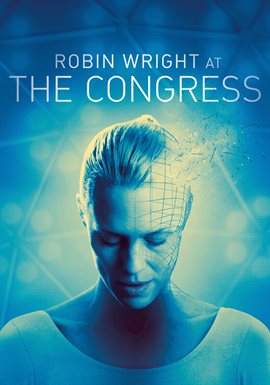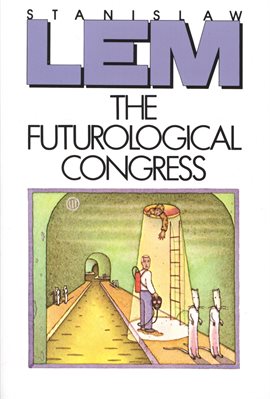by John Jewitt, Manager, Social Science and History Department
As an example of the great movies you can find in our online Hoopla collection, check out Robin Wright At The Congress, directed by Ari Folman.

The movie’s three distinct sections are a really interesting exploration of the human condition, focusing on our fascination with entertainment and distraction.
The movie opens in the recognizable present. Robin Wright (playing a version of herself), is offered a final contract by the head of Miramount Studios. Under economic pressure, and looking ahead to the end of movie-making with actors in-person, the studio is digitizing the images of stars so that they can be cast in any movie without needing to be physically present. Robin is their next target.
This fictional Robin is vulnerable to the manipulations of the studio. She has an obligation to her teenage children, and has made some poor career choices. Although well known for Princess Bride and Forrest Gump, this Robin has not been particularly successful since. The studio makes an offer. They want to pay Wright one final time to completely digitize her image, after which she will not be permitted to act again. Wright’s performance, faced with this life-altering and potentially career-ending decision, is nuanced and emotional and captivating. The men around her are craven and manipulative. Studio head Danny Huston gives a pep-talk that veers subtly but sharply into a list of all Wright’s character flaws and mistakes, and we watch her as he says this to her face. In a remarkable monologue, Agent Harvey Keitel tells the exact story he needs to tell to help his client make the decision he favors, and again confronts Robin with her weaknesses in confessing his reasons for selecting her as a client. This is a confrontational take on fame, celebrity, and the entertainment economy, made all the more pointed by the fact that Robin Wright is “playing herself” and not a different character.
In section two, we fast-forward twenty years to see Wright arriving at The Miramount Congress. In these twenty years, the technology of experience has moved beyond 3-D scanning, and is now entirely chemical. Wright attends The Congress by inhaling a chemical that she’s handed by a doorman. The transition into this alternate reality is represented by the movie’s switch to an animated format. As Robin checks in to The Congress she is greeted as “the fourth one today.” In this neurochemical reality, anyone in possession of the correct chemical compounds can be anyone, or experience anything that they want to, and the “real” Robin Wright can’t necessarily be distinguished from imposters or pretenders. As the image of her previously-digitized self, Rebel Robot Robin, Street Fighter, whirls in the air above the animated attendees, Wright arrives to provide the keynote at the Congress. Can she be relied upon to continue to represent the interests of Miramount?

The third section of the movie moves us on another twenty years, and begins (like The Matrix, Ready Player One, and even WALL-E) with the proposition that alternate reality or constant distraction is superficially preferable to actual reality. The animated world of the Congress is now, somehow, not simply a neuro-chemical conference. It’s a full lived experience. Is there any way out? What happens when you move between reality and neuro-reality? Can you move in both directions? What does this version of Robin Wright want from her life, and how will she navigate between these worlds to be able to find it?
The movie is partially inspired by The Futurological Congress by Stanislaw Lem, a Polish science-fiction novel first published in 1971. The novel is also available on Hoopla. Usually I’m a “book before the movie” person, but in this case, part of the fun of reading the book comes from finding the pieces that were adapted and placed in the movie, and revisiting some of the scenes that make a direct reference back to the book. The stories are different enough that the movie doesn’t spoil the book, but rather enhances it.
As you’re looking through Hoopla to see what’s in the collection to watch, read, and listen to, or you want to look at some items side-by-side, take a look at the mind and reality-bending The Congress, and the book that inspired it.